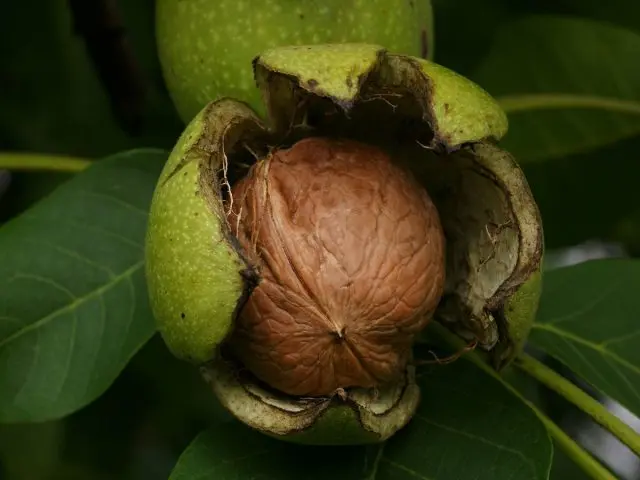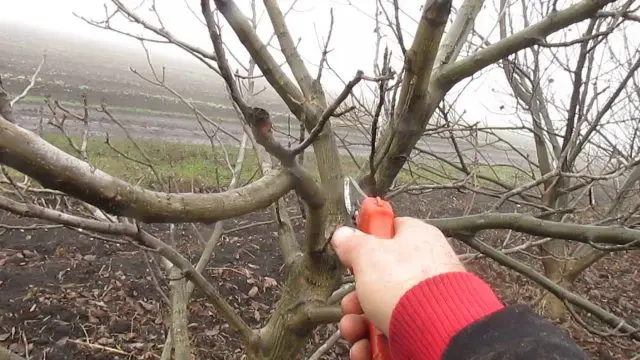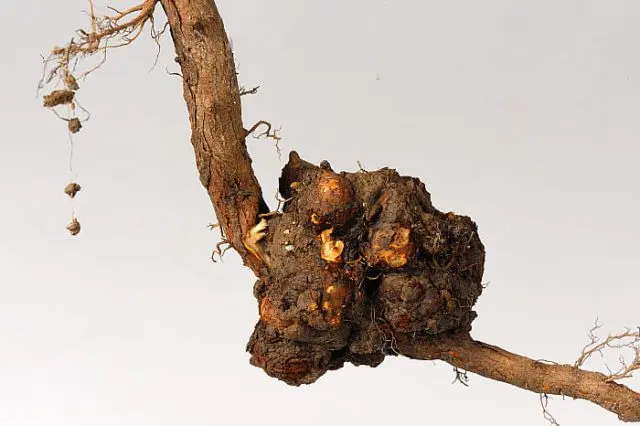Contents
A walnut bears fruit only a few years after planting, as this plant is a long-liver, unlike many fruit trees for a garden plot. The life expectancy of a walnut is hundreds of years – the age of the oldest trees reaches 400-500 years. The growth of the plant is almost unlimited, and the yield depends on the variety and growing conditions, although in general it is an unpretentious crop that even a beginner in gardening can handle.
How many years does it take for a walnut to bear fruit?
The exact timing of fruiting is determined by the group to which this or that variety of walnut belongs. On average, the beginning of fruiting of a walnut falls on the 5-8th year of life, however, there are also early varieties that bear fruit already in the 4th year after planting in a permanent place. Late-fruiting crops begin to bear fruit only at the 10-15th year of life.
How many walnut fruits gives
Medium-yielding varieties bring about 8-10 kg of nuts per year. As they grow older, this figure increases to 20-30 kg of fruit per tree annually. Trees of 50 years and more are capable of producing more than 1 ton of nuts per year.
The most productive varieties include:
- Bukovinskiy-2 – about 20 kg are collected from one adult tree (about 25-50 years old);
- Chernovetskiy – from 40 to 45 kg of fruit;
- Ideal – 120 kg of fruits from a tree about 20 years old.
Harvest time is more accurately determined by the pericarp. As soon as large cracks appear on them, the ripening of walnut fruits has come to an end.
The yield of walnuts can be increased in several ways:
- In regions with a dry, warm climate, it is recommended to cultivate the soil in the garden plot with steam and green manure.
- In dry times, it is necessary to organize regular irrigation of plantings. This is especially true for moisture-loving varieties that are vulnerable to a lack of water in the soil.
- You can also fertilize old plantings with mixtures high in potassium and phosphorus.
- Finally, yield performance largely depends on how regularly pruning is done. Timely removal of old and damaged shoots has a positive effect on the development of the tree.

How long does a walnut bear?
The exact timing depends on the variety of walnut. On average, fruiting lasts from late August to late October.
Why the walnut does not bear fruit
A walnut may not bear fruit for many reasons. It often happens that the plant is simply too young and the fruiting period has not yet come, and the site owners sound the alarm ahead of time. The lack of a crop can also be caused by errors in the agricultural technique of cultivation and the invasion of pests.
Excessive thickening
One of the most common mistakes is overcrowding, in which walnut trees are too close together. With this placement, the plants quickly deplete the soil and begin to starve, which affects fruiting. Increased watering here will no longer help, as well as additional feeding. With a strong thickening, the walnut not only ceases to bear fruit, but is also easily affected by infectious diseases and soon dies.
The recommended distance between two adjacent trees is at least 5 m, better is more – from 7 to 8 m, since as the walnut crown grows, it grows strongly to the sides.
The tree is “fat”
The fruiting of the walnut also stops due to the fact that the tree begins to “fatten” – actively grow without forming an ovary. In other words, there is an intensive set of green mass and shoot formation to the detriment of fruiting.
At the first signs of “fatting” it is necessary to stop feeding the trees.
no pollinator
A walnut will not be able to form ovaries even if there are flowers, if there is no cross-pollination. The tree does not belong to self-pollinated horticultural crops, so it must be pollinated artificially. Pollination problems can be avoided by planting another variety of walnut near the plantings. In addition, 1-2 trees can be grafted or budding with an eye of another variety that blooms at the same time.
Incorrect trimming
If the walnut has too abundant shoot formation and an impressive green mass, the wind in the dense crown will not be able to contribute to the pollination of the plantings. In order for the walnut to continue to bear fruit, it is necessary to thin out its crown. Remove dry and damaged shoots, as well as branches that touch each other.

Improper watering and fertilizing
Walnuts do not tolerate prolonged drought very well, therefore, in regions with a hot climate, it sometimes ceases to bear fruit due to improper irrigation.
Young trees and an adult walnut at the stage of flowering and fruit formation are especially acute in regular moistening of the soil. About 30 liters of water are spent on one tree in a hot summer, 3 times a month. In conditions of prolonged rains, watering is reduced to 1-2 times a month. With the same frequency, mature trees from 4 m in height are watered.
Fertilize the walnut moderately – no more than 2 times a year. In the spring months, plantings are fed with nitrogen, in the fall – with potassium and phosphorus. Trees over 20 years old are fertilized with potassium salt, superphosphate and ammonium nitrate.
Nitrogen-containing fertilizers are applied very carefully, since an excess of nitrogen in the soil can provoke walnut “fatting”. That is why young seedlings do not feed nitrogen at all. Moreover, a high concentration of this trace element in the soil increases the risk of bacteriosis infection.
As organic fertilizers, siderates are often used, which are planted between trees. Suitable siderates:
- oats;
- peas;
- lupine.
These plants will naturally fertilize the land and help you get a bountiful harvest.
Diseases and pests
Insects infect a walnut infrequently, but still they can harm plantings in order. The main threats include the following pests:
- white american butterfly. You can get rid of it with any industrial insecticide.
- Plodojorka. Pheromone traps will help with this pest, which destroy the males of these pests. Also, as a preventive measure, it is recommended to remove fallen leaves in time.
- A woodcutter. This insect, like the American butterfly, is vulnerable to chemicals. To combat it, any purchased insecticide is suitable.
The main diseases of the walnut include marsonia (also brown spot) and bacteriosis. Most often, the cause of planting disease is an excess of moisture in the soil or, conversely, drying out.
Marsonia infects a walnut in a hot rainy summer, when the humidity of the air increases significantly. To protect the garden plot from this disease, varieties adapted for cultivation in such climatic conditions should be planted. Young trees are sprayed with Bordeaux liquid, preferably before the buds open.
Humid, warm weather is also an ideal environment for bacteriosis. Treatment measures for the disease include treatment with Bordeaux liquid and a weak solution of urea. The frequency of treatments is 1 time in 2 weeks.
A walnut can also stop fruiting if the plant infects root cancer – a real disaster for all fruit trees and shrubs. This disease can lead to the death of the plant in the shortest possible time. The disease manifests itself in the form of tuberous growths.

At the first sign of cancer, the damaged areas are sprayed with a weak solution of caustic soda, after which the roots are washed with clean water.
What to do if the walnut does not bear fruit
If a walnut stops bearing fruit, first you need to find out the cause of this phenomenon. In accordance with the identified problem, choose a further plan of action:
- When thickening plantings, trees need to be thinned out. To do this, cut off old and weak shoots, as well as branches that interfere with the growth of neighboring ones.
- The lack of nutrients in the near-stem circle is corrected by applying organic fertilizers under the tree. To do this, they dig the soil under the walnut with a pitchfork and feed the plant with humus. Recommended rate: 3-4 buckets per 1 m2. The procedure is completed with mulching.
- When the topsoil dries out, plantings are watered abundantly. Enough 10 buckets for each tree.
- If the walnut has ceased to bear fruit due to “fatting”, then it is necessary to suspend all fertilizing and watering. Even if this does not help, then you will have to cut off the ends of the roots. To do this, the plant is carefully dug in a circle. The distance from the resulting furrow to the trunk should be about 50 cm. The roots of the tree along this line are chopped off (only the largest ones, it is better not to touch the small ones) and sprinkled with earth again.
- If problems with fruiting are caused by the lack of a pollinator, then another variety is planted next to the plantings or trees are artificially pollinated – for this you need to shake pollen from another variety over the trees that have ceased to bear fruit. You will need a cut of a branch from another variety, which is prepared 20-30 days before the pollination procedure.
Preventive measures
You can reduce the risk of tree disease if you periodically spray them with chemicals:
- Against marsonia, plantings are treated 3 times with a solution of copper sulfate and quicklime, taken in a ratio of 1: 1 and diluted with a small amount of water. In addition, in the spring, walnut buds can be sprayed with Vectra.
- Trees will also be protected from bacteriosis by spraying the tree three times with a mixture of quicklime and copper sulfate.
- In addition, for better protection, it is recommended to periodically remove fallen leaves.
Conclusion
The walnut does not bear fruit immediately, which is the norm for centenarian plants, and is not at all a sign of any disease. Depending on the variety, fruiting occurs on average in the 5-8th year of the tree’s life. Caring for the plant is very simple, and with regular preventive treatments against pests, the walnut gives a bountiful harvest in the fall.
You can learn more about how a walnut ripens in the video below:









